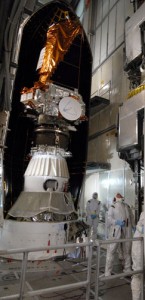Kepler on deck
Fingers crossed for Friday night’s planned launch of the Kepler telescope to search for Earth-size planets around other stars

Fingers crossed for Friday night’s planned launch of the Kepler telescope to search for Earth-size planets around other stars. The odds of getting off the ground safely are good: the Delta II is one of the most reliable rockets ever built. Still, ask the people who spent the better part of a decade planning the now lost Orbiting Carbon Observatory how quickly a $273 million spacecraft can vanish. Is there any other high technology enterprise where failure is so costly, sudden, and final?
Even though it's being called a "planet hunter," Kepler isn't really looking for planets we can explore further or think about visiting someday. The stars it will target are too distant for follow-up investigation—typically between 500 and 3,000 light years away.
Think of this mission as a confidence-builder. Scientists have reason to believe that Earthlike planets are common in the galaxy, but so far the observational evidence is pretty thin. Kepler is meant to provide hard statistics. If it finds that a good percentage of stars have terrestrial planets, we’re much more likely to go ahead with missions that can study nearby solar systems more intensively. If Earths turn out to be rare, the agencies that fund billion-dollar space telescopes may approve the search anyway. But they'll be a lot more nervous about wasting their money.